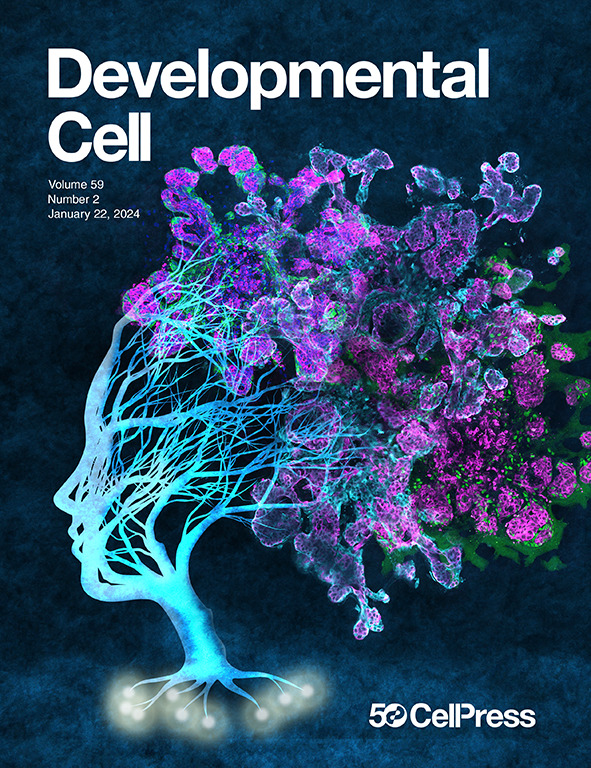VRN2-PRC2促进光触发的PIF信号抑制,以协调拟南芥的生长
IF 10.7
1区 生物学
Q1 CELL BIOLOGY
引用次数: 0
摘要
VERNALIZATION2(VRN2)是多聚酶抑制复合体 2(PRC2)的一个开花植物特异性亚基,PRC2 是一种保守的真核生物全酶,通过在染色质中沉积组蛋白 H3 赖氨酸 27 三甲基化(H3K27me3)标记来抑制基因表达。先前的工作确定了 VRN2 是 N-降解子途径的氧调控靶标,它可能是连接 PRC2 活性与内源和环境线索感知的传感器亚基。在这里,我们发现 VRN2 在拟南芥缺氧的嫩枝先端和新生叶片中富集,它通过在促进细胞扩增的 PHYTOCHROME INTERACTING FACTOR(PIF)调控的关键基因中建立稳定和条件抑制的染色质状态来负向调节生长。在叶片发育的后期,这种功能需要通过光响应信号级联使这些基因处于抑制状态。因此,我们将 VRN2-PRC2 鉴定为发育和空间编码的表观遗传机制的核心成分,该机制通过促进信号依赖性的 PIF 信号抑制来协调植物生长。本文章由计算机程序翻译,如有差异,请以英文原文为准。

VRN2-PRC2 facilitates light-triggered repression of PIF signaling to coordinate growth in Arabidopsis
VERNALIZATION2 (VRN2) is a flowering plant-specific subunit of the polycomb-repressive complex 2 (PRC2), a conserved eukaryotic holoenzyme that represses gene expression by depositing the histone H3 lysine 27 trimethylation (H3K27me3) mark in chromatin. Previous work established VRN2 as an oxygen-regulated target of the N-degron pathway that may function as a sensor subunit connecting PRC2 activity to the perception of endogenous and environmental cues. Here, we show that VRN2 is enriched in the hypoxic shoot apex and emerging leaves of Arabidopsis, where it negatively regulates growth by establishing a stable and conditionally repressed chromatin state in key PHYTOCHROME INTERACTING FACTOR (PIF)-regulated genes that promote cell expansion. This function is required to keep these genes poised for repression via a light-responsive signaling cascade later in leaf development. Thus, we identify VRN2-PRC2 as a core component of a developmentally and spatially encoded epigenetic mechanism that coordinates plant growth through facilitating the signal-dependent suppression of PIF signaling.
求助全文
通过发布文献求助,成功后即可免费获取论文全文。
去求助
来源期刊

Developmental cell
生物-发育生物学
CiteScore
18.90
自引率
1.70%
发文量
203
审稿时长
3-6 weeks
期刊介绍:
Developmental Cell, established in 2001, is a comprehensive journal that explores a wide range of topics in cell and developmental biology. Our publication encompasses work across various disciplines within biology, with a particular emphasis on investigating the intersections between cell biology, developmental biology, and other related fields. Our primary objective is to present research conducted through a cell biological perspective, addressing the essential mechanisms governing cell function, cellular interactions, and responses to the environment. Moreover, we focus on understanding the collective behavior of cells, culminating in the formation of tissues, organs, and whole organisms, while also investigating the consequences of any malfunctions in these intricate processes.
 求助内容:
求助内容: 应助结果提醒方式:
应助结果提醒方式:


